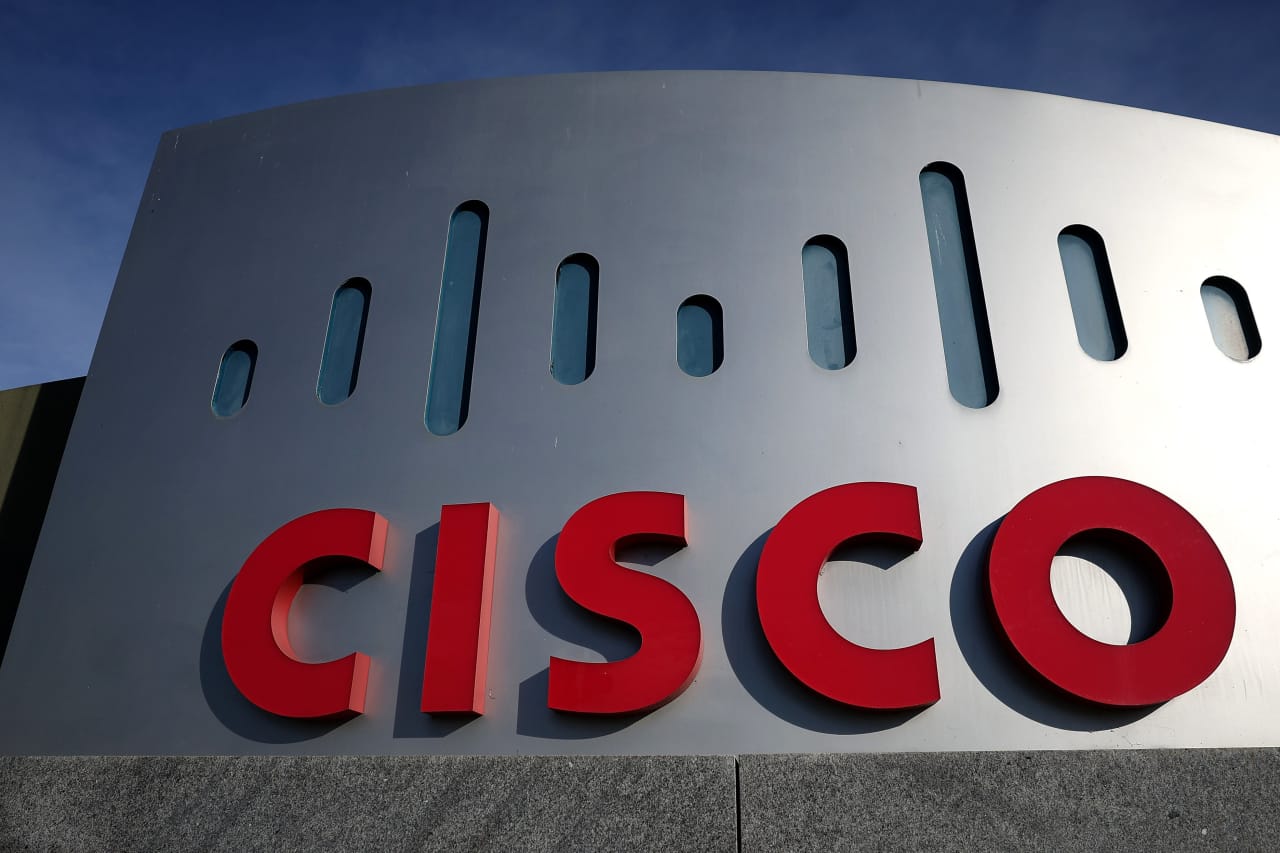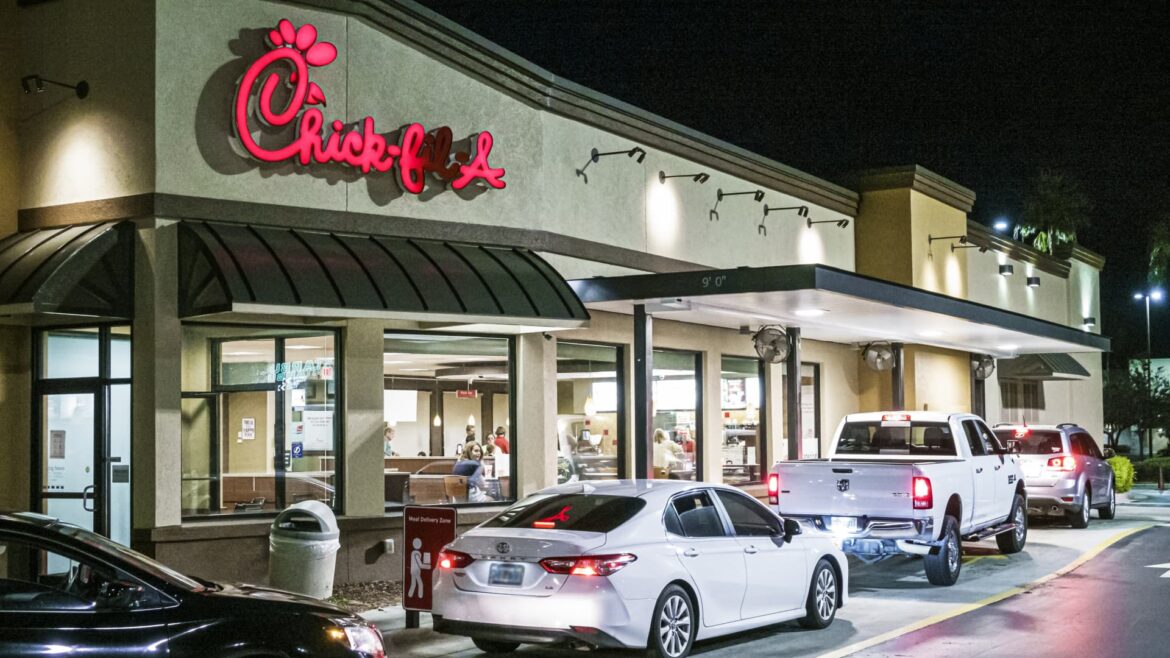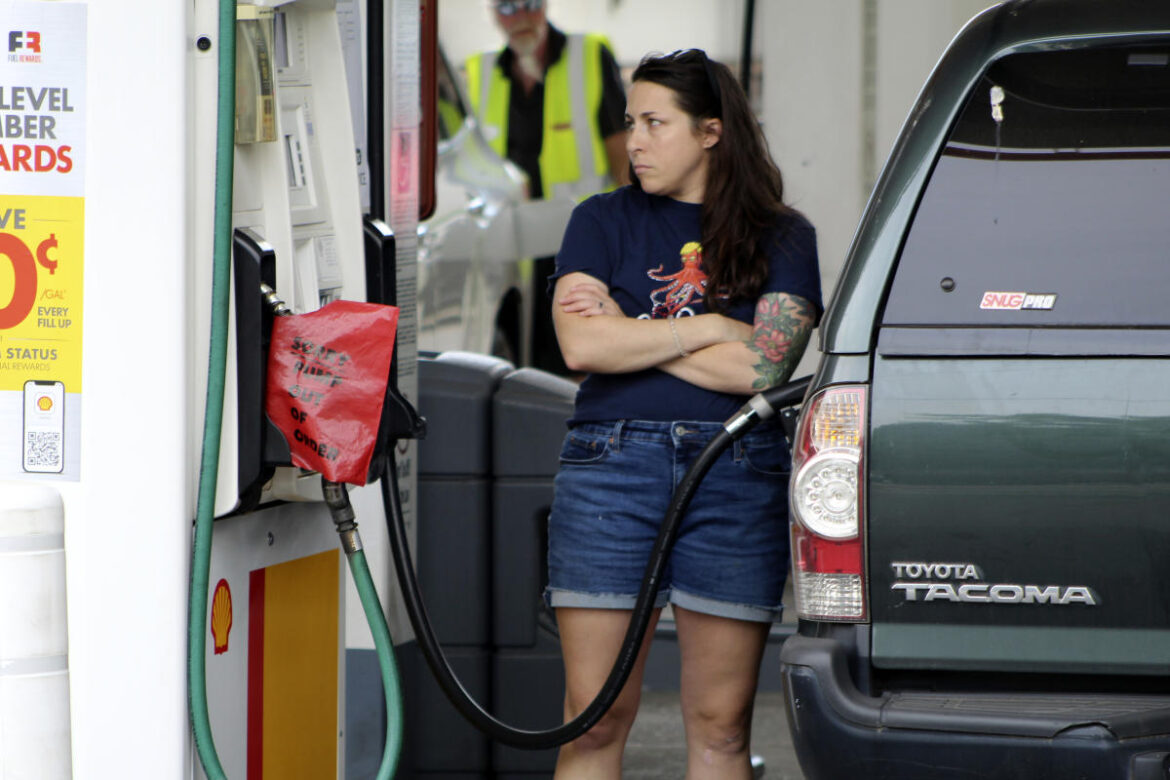
BofA’s Tal Liani upgraded Cisco shares, cheering the company’s opportunity to benefit from networking growth on the heels of market-share gains.
Source link
drivers
Here Are The Major Drivers Behind The Bitcoin Price Recovery Above $42,000
Bitcoin recently surged above $42,000, having traded below $40,000 for several days. This market recovery is believed to be a result of different factors, including recent revelations about the US economy.
Macroeconomic Factors That Contributed To The Recent Bitcoin Surge
The personal income expenditures (PCE) price index, a leading inflation indicator, was released on January 26 and reported to have been lower than expectations. This suggests that inflation in the United States is cooling off, and experts predict that the Federal Reserve will likely reduce their aggressive monetary policies.
The Fed’s hawkish stance is known to have a negative effect on Bitcoin’s price and the broader crypto market. As such, this recent development is a positive one and is something that could have influenced investors to double down on their investments in the flagship cryptocurrency, thereby sparking a price surge.
Meanwhile, data from the US Treasury recently showed that the country has hit an all-time debt of $34,1 trillion. While this has raised concerns about the looming crash of the US dollar, it has also presented Bitcoin and other cryptocurrencies as a haven to hedge against the potential devaluation of the nation’s currency.
Interestingly, different financial analysts, including renowned economist Peter Schiff, have continued to predict the imminent crash of the US dollar. In light of this, finance author Robert Kiyosaki has urged everyone to invest in Bitcoin to avoid becoming poorer due to the government’s actions.
Another factor believed to have contributed to Bitcoin’s recent surge is the expiration of monthly BTC options contracts on Deribit. The expiry outcome more than likely played a crucial role in Bitcoin’s rally, considering that CryptoQuant CEO Ki Young Ju had pinpointed the derivatives market as responsible for Bitcoin’s recent decline.
BTC price jumps after downtrend | Source: BTCUSD on Tradingview.com
GBTC’s Outflow Slows For The Fourth Consecutive Day
Grayscale’s GBTC saw an outflow of just $255.1 million on January 26, continuing a recent trend of reduced outflows from the fund. NewsBTC reported how the Bitcoin ETF had seen outflows of $515 million, $429 million, and $394 million on January 23, 24, and 25, respectively.
As noted by Bloomberg analyst James Seyffart, January 26 also happened to be the lowest outflow day for GBTC since converting to a Spot Bitcoin ETF. This development suggests that the fund’s investors may be cooling off on taking profits. It is also significant because Grayscale has contributed to the selling pressure that has plagued Bitcoin of late.
At the time of writing, Bitcoin is trading at around $41,700, up over 4% in the last 24 hours according to data from CoinMarketCap.
Featured image from U.Today, chart from Tradingview.com
Disclaimer: The article is provided for educational purposes only. It does not represent the opinions of NewsBTC on whether to buy, sell or hold any investments and naturally investing carries risks. You are advised to conduct your own research before making any investment decisions. Use information provided on this website entirely at your own risk.
Experts Reveal Drivers of Bitcoin’s Rally and Potential BTC Price Targets
Bitcoin (BTC) has established strong support between $25,000 and $30,000. Take a look at the next key resistance.
The price of Bitcoin has been steadily rising since October 13, following its inability to break the support level of around $26,000. Since then, it has continued to climb, reaching $35,000 earlier today, a level not seen since May 2022. The move from the support level to $35,000 represents a price increase of over 30% in just two weeks.
The BTC rise has boosted the hopes of many investors, with some believing it could mark the beginning of the much-anticipated bull run. However, due to the prevailing uncertainty in the Bitcoin and cryptocurrency markets, many still anticipate a price retracement, with some even expecting a drop below $15,000 to provide an attractive buying opportunity.
Institutional Investment Is Driving Bitcoin Price Rise
Experts have been analyzing the primary driver behind this recent price surge. According to a report from CoinDesk, Jack Tan of Woo Network characterizes Bitcoin as being in an ‘anti-gravity’ phase, rising rapidly beyond expectations. He predicts that BTC could potentially reach $75,000 in the near future.
Many Bitcoin users and experts have been eagerly awaiting the final approval of a Bitcoin ETF, believing that such approval could boost the market. Tan suggests that the recent increase in Bitcoin’s value is a glimpse of what might happen if exchange-traded funds (ETFs) linked to Bitcoin receive approval. He notes that much of the anticipated price increase has already been factored into the market since Bitcoin was valued at $25,000 back in February. Additionally, Tan highlights the decreasing discount associated with the Grayscale Bitcoin Trust, a way to invest in Bitcoin, which suggests a growing demand for Bitcoin investments, even without ETFs. According to Tan, the excitement about potential ETF approval is partly fueling Bitcoin’s remarkable ascent.
Why $BTC is pumping?#iShares Spot #Bitcoin Trust is listed on The Depository Trust & Clearing Corporation (DTCC). $IBTC
The #SEC has accepted the rule change to list and trade shares of the #Grayscale Ethereum Futures Trust (#ETF). pic.twitter.com/Ask2wsaUL8
— Lookonchain (@lookonchain) October 24, 2023
When examining the factors contributing to Bitcoin’s rise, on-chain analytics firm Lookonchain points to increased institutional investment. They highlight the recent listing of the iShares Spot Bitcoin Trust on the Depository Trust & Clearing Corporation (DTCC) and the SEC’s approval of the Grayscale Ethereum Futures Trust (ETF), which now allows major financial institutions to invest directly in cryptocurrencies.
These regulatory developments have opened the door for institutional capital to flow into digital assets through traditional, regulated channels. This influx of significant capital has generated substantial buying pressure, driving cryptocurrency prices higher. While further regulatory clarity is needed, these developments indicate that traditional finance is increasingly embracing cryptocurrencies.
Regarding the Bitcoin price outlook, respected Bitcoin analyst Ali Charts reveals that Bitcoin has established strong support between $25,000 and $30,000. According to his UTXO Realized Price Distribution (URPD) model, which analyzes on-chain data, the next key resistance levels for BTC are at $38,440 and $47,360. This suggests that Bitcoin’s price is poised for further gains after solidifying its support base. Based on his URPD analysis, Ali Charts anticipates Bitcoin’s rally to continue, with the cryptocurrency facing its next challenges at these higher resistance levels.
next
Bitcoin News, Cryptocurrency News, Funds & ETFs, Market News, News

Temitope is a writer with more than four years of experience writing across various niches. He has a special interest in the fintech and blockchain spaces and enjoy writing articles in those areas. He holds bachelor’s and master’s degrees in linguistics. When not writing, he trades forex and plays video games.
You have successfully joined our subscriber list.
Chick-fil-A had the slowest average drive-thru experience in 2022, but the highest customer satisfaction.
Jeff Greenberg | Universal Images Group | Getty Images
Fast-food drive-thru lanes are speeding up as fewer customers choose to order their meals and milkshakes sitting in their car, according to an annual study by Intouch Insight released Monday.
The average total time spent in a drive-thru lane shrank 29 seconds this year. Wait times to order were 25 seconds shorter, as the average number of cars in line to place orders fell from 2.76 to 1.27.
The Intouch Insight study was based on visits to nearly 1,500 locations of Arby’s, Burger King, Carl’s Jr., Chick-fil-A, Dunkin’, Hardee’s, KFC, McDonald’s, Taco Bell and Wendy’s. Mystery shoppers ordered from the drive-thru lanes during a range of times between June and July.
Taco Bell, KFC and Carl’s Jr. had the fastest overall times for their drive-thru lanes. But Chick-fil-A, McDonald’s and Wendy’s bested all three chains when their longer average total times were divided by the number of cars in line. In other words, Carl’s Jr and Yum Brands’ Taco Bell and KFC were only speedier because their drive-thru lanes weren’t as popular.
But across the board, drive-thru lanes have waned in demand since the Covid-19 pandemic began. At that time, customers shifted from ordering inside to ordering from their cars. The trend continued even as fast-food restaurants reopened their dining rooms.
But the surge in popularity put pressure on workers to assemble orders quickly and accurately, and fast-food chains had to come up with solutions such as curbside pickup for mobile orders to address the problem. Despite those efforts, this year’s total drive-thru times still lag 2019 times by 15 seconds.
Many diners have now shifted to ordering online or using self-order kiosks inside restaurants.
Even as drive-thru visits stabilize, restaurant companies such as McDonald’s and Chick-fil-A are still working to speed up service and reduce errors. Some are testing artificial intelligence software to take orders or are building new locations with as many as four drive-thru lanes.
Intouch Insight’s mystery shoppers visited two special restaurants this year: a McDonald’s test restaurant outside of Fort Worth, Texas, with an order-ahead lane and a drive-thru lane, along with a Taco Bell location in Brooklyn Park, Minnesota, with one traditional drive-thru lane and three additional lanes reserved for delivery drivers and customers who ordered ahead.
Both locations’ service times outperformed their broader brands’ times by roughly a minute. The Taco Bell restaurant also outperformed on order accuracy with a score of 88%, versus the chain’s rate of 85%. But the McDonald’s test location fell short with an accuracy score of 80%, well below the chain’s rate of 88%.
Oregon lets drivers fuel their own cars, lifting decades-old self-serve ban
SALEM, Ore. (AP) — For the first time in 72 years, Oregon motorists can grab a fuel nozzle and pump gas into their cars on their own, since a decades-old ban on self-serve gas stations has been revoked.
Gov. Tina Kotek signed a bill on Friday allowing people across the state to choose between having an attendant pump gas or doing it themselves. The law takes immediate effect.
That leaves New Jersey as the only state that prohibits motorists from pumping their own gas. A few countries also ban it, including South Africa, where attendants offer to check fluid levels and clean the windshield, with tipping expected.
“It’s about time. It’s long overdue,” said Karen Cooper, who lives in Salem, said shortly before the bill was signed.
“I’ve spent a lot of time in California,” Cooper said. “I know how to pump my own. Everybody should know how to pump their own gas.”
Kacy Willson, 32, who has lived in Oregon her whole life, said she doesn’t have much interest in pumping her own gas. She’s only tried it a few times in her life.
“It’s kind of nice to have someone do that,” she said at a Portland gas station Friday. “I don’t really leave Oregon very much, and when I do, I have to ask someone how to pump gas, and I feel weird.”
When Oregon prohibited self-service in 1951, lawmakers cited safety concerns, including motorists slipping on the slick surfaces at filling stations subject to Oregon’s notoriously rainy weather. In recent years legislators relaxed the rule and allowed rural counties to have self-serve gas available at night. Then they extended it to all hours in eastern Oregon’s sparsely populated areas, where motorists low on gas could be stranded when there’s no attendant on duty.
The COVID-19 pandemic labor shortage helped drive a renewed push to allow self-serve across the state.
“We live in a small town in a large county and can’t find employees to pump fuel,” Steve Rodgers, whose community is at the base of the snow-capped Cascade Mountains, complained to lawmakers. “We are paying top dollar and also offering insurance, paid time off and retirement benefits, and still cannot fully staff.”
Haseeb Shojai, who immigrated from Afghanistan in 2004 and owns gas stations in central Oregon’s high desert, also lamented the labor shortage and described how wildfires, with increased intensity and frequency due to climate change, are having a major effect. The state fire marshal lifted the self-serve ban during dangerous heat waves the past couple of summers.
“Wildfires have been a factor in operating our business in the summer months, when it is hard for our gas attendants to stay for long periods outside in smoke and in heat,” Shojai said. “We don’t know if we can stay open tomorrow or the next day or even next week due to the labor shortage.”
A union representing workers at grocery store fuel stations in Oregon predicted job losses and called the the law a “blatant cash grab for large corporations.”
“With over 2,000 gas stations in Oregon, laying off just one employee per location represents millions of dollars a year that giant corporations are not paying in wages, benefits and public payroll taxes,” said Sandy Humphrey, the secretary-treasurer of UFCW Local 555.
Under the new law, there can’t be more self-service pumps at a gas station than full-service ones. And prices for motorists must be the same at both types.
Still, opponents of the measure worry that it could lead to the demise of full-service pumps, depriving older adults and people with disabilities of that option.
“I have some real concerns that we are progressively getting closer and closer to eliminating Oregon’s fuel service law entirely,” Democratic state Sen. Lew Frederick said on the Senate floor in June before voting against the bill.
Brandon Venable, a service station manager, had urged lawmakers to reject the bill, saying some customers are careless and that attendants keep people safe.
“I deal with many dangerous situations daily created by people smoking, leaving their engines running, getting in and out of their vehicles creating static electricity, trying to fill up random bottles and jugs, and driving off with the pump still in the vehicle,” Venable said.
Others wonder if motorists who are now clamoring to pump their own gas might be less keen on doing so when they have to stand out in the rain, cold and snow instead of remaining in their warm, dry cars.
Republican state Sen. Tim Knopp, who leads the minority GOP caucus, downplayed safety concerns as he described being allowed to pump his own gas because he belongs to a commercial fueling cooperative.
“I have yet to light myself on fire. I have yet to cause any problems whatsoever as it relates to self-serve gas,” Knopp said during debate on the bill. “So, colleagues, let’s make New Jersey the only state in the country that has a law against self-serve gas.”
The state Senate then approved the bill on a 16-9 vote. The House earlier passed it 47-10.
New Jersey’s 1949 ban on self-service pumps remains a source of pride for some in a state where bumper stickers declare “Jersey Girls Don’t Pump Gas.”
Since New Jersey has lower gas prices than New York and Pennsylvania, many drivers from neighboring states cross the state line to fuel up.
In 2015, lawmakers proposed ending the New Jersey ban, but the measure died because of opposition from the powerful state Senate president.
___
Associated Press reporters Michael Catalini in Trenton, New Jersey, and Claire Rush in Portland, Oregon, contributed to this report.





